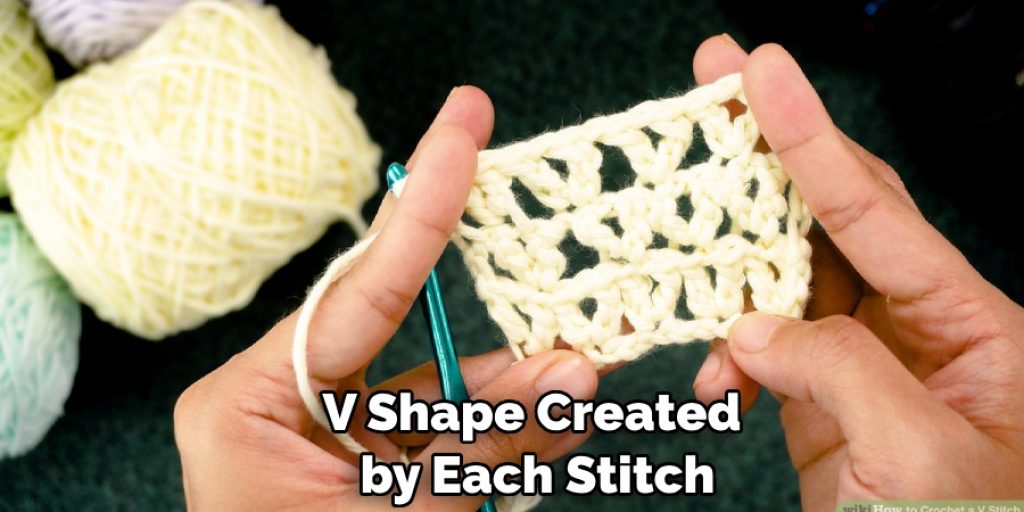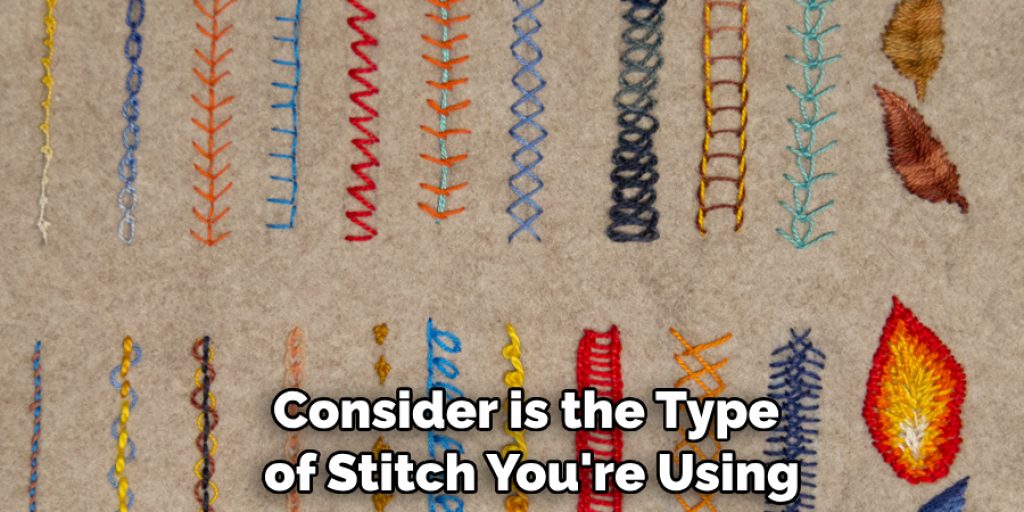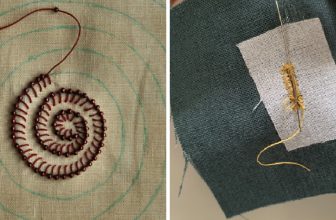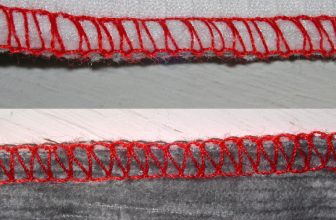How to Count Crochet Stitches
Crocheting may seem daunting for beginners, but with enough practice and patience, anyone can master it. One of the most important aspects of crocheting is counting stitches. Keeping track of your stitches helps ensure that your project turns out right and saves you from unraveling rows when you make a mistake. In this blog post, we’ll teach you how to count crochet stitches and make your crocheting experience more enjoyable.

Can You Count Crochet Stitches?
Crocheting is a skill that can lead to beautiful and unique creations, but it can also be a source of frustration for beginners. One of the essential skills to develop is counting crochet stitches, a seemingly simple task that can easily lead to mistakes if not done carefully.
Whether you’re making a simple amigurumi or an intricate lace shawl, keeping track of your stitches is crucial to avoid any mishaps. Luckily, there are a few tricks to make counting your stitches easier, such as using stitch markers or counting out loud as you work. With practice, you can confidently count your crochet stitches and create stunning pieces you can be proud of.
Why Should You Count Crochet Stitches?
If you enjoy crocheting, you know it can be a fulfilling and relaxing hobby. However, your project could look wonky if you’re not counting your stitches. Counting your stitches ensures that each row maintains consistency and that your project is symmetrical.
It can also help you catch mistakes early on to fix them before you’re too far into your work. So, while it may seem tedious, counting your crochet stitches is essential for creating beautiful, polished pieces. Plus, you’ll feel satisfied knowing you put care and attention into every stitch.
7 Tips to Follow on How to Count Crochet Stitches
1. The Basic Crochet Stitches
Before we dive into counting crochet stitches, let’s review the basic stitches: the chain stitch (ch), single crochet (sc), half double crochet (hdc), double crochet (dc), and treble crochet (tr). Knowing and familiarity with these stitches is important when counting your crochet stitches.
2. Counting the Foundation Chain
The foundation chain is the first row of stitches at the beginning of your project. Counting it is crucial, as it determines the width of your project. Count the number of chains from the crochet hook to the end to count the foundation chain.
3. Counting Rows and Stitches

To count the number of rows you’ve crocheted, count the “V” shape created by each stitch in your work. For example, if you’ve done ten rows of single crochet, you should count ten “V” shapes. Counting your stitches in each row is also important. To do this, count the top loops of each stitch. For example, if you’ve done ten single crochet stitches, there should be ten top loops to count.
4. Keeping Track of Stitch Patterns
Crocheting projects often include stitch patterns, which can be challenging to count. One trick to keeping track of stitch patterns is to use stitch markers. Place a marker at the beginning of every repeat of the stitch pattern. This will help you know when you’ve completed a set of stitches and prevent you from losing your place in the pattern.
5. Counting Along the Edge of a Project
When counting along the edge of your project, it’s important to count all the stitches in each row. This includes any chain or turning chains made at the beginning and end of each row. For example, if you’ve done 10 single crochet stitches across a row with two chains at the beginning and two at the end, there should be 14 stitches to count.
6. Counting Increases and Decreases
Increases (or increases) are when you add a new stitch to your work, while decreases (or decreases) are when you remove a stitch. To accurately count increases and decreases in each row, count the “V” shapes created by each stitch and the stitches that have been added or removed.
7. Fixing Counting Mistakes
It’s easy to make a counting mistake while crocheting, but it’s also easy to fix them. Remember: when adding stitches, you can “undo” them by taking your crochet hook out of the loop and pulling on the yarn tail to remove the stitch. And when decreasing stitches, you can undo them by reinserting your crochet hook into the loops of the decreased stitch and working it back into your work.
Following these tips will help you get an accurate count of all your crochet stitches so your project turns out just how you imagined! With practice, counting crochet stitches will become second nature. Happy crocheting!
5 Considerations Things When You Need to Count Crochet Stitches
1. The Type of Stitch

When you’re counting crochet stitches, the first thing you need to consider is the type of stitch you’re using. Single crochet stitches, for example, are much easier to count than double crochet stitches. If you’re starting out, it might be a good idea to practice with single crochet stitches before moving on to more complicated stitches.
2. The Direction of The Stitch
Another thing to consider when counting crochet stitches is the direction of the stitch. If you’re working in a straight line, then it’s easy to count each stitch as you go along. However, if you’re working in a spiral or in a circle, then it can be more difficult to keep track of your stitches. In these cases, it might be helpful to use a stitch marker to mark the beginning of each row or round.
3. The Size of The Hook
The hook size you’re using can also affect how easy it is to count crochet stitches. A smaller hook will create tighter stitches that are harder to count, while a larger hook will create looser stitches that are easier to count. Choose a hook size that is comfortable for you, and that will create stitches that are easy for you to count.
4. The Type of Yarn
The type of yarn you’re using can also make a difference in how easy it is to count crochet stitches. A thicker yarn will be easier to see and count than a thinner yarn. If you’re having trouble seeing your stitches, try using a contrasting color yarn so that it’s easier to see where each stitch is located.
5. The Tension of Your Stitching
Finally, the tension of your stitching can also affect how easy it is to count crochet stitches. If your stitching is too loose, then your stitches will be hard to see and count. On the other hand, if your stitching is too tight, then your work will be difficult to work with and may even unravel. Finding the right tension for your stitching is a matter of practice and experimentation, so don’t be discouraged if it takes some time to get it right.

By understanding these five considerations when counting crochet stitches, you can make sure that your project turns out just the way you want it to. Practice makes perfect, so don’t be afraid to experiment and try new techniques until you find what works best.
Benefits of Count Crochet Stitches
Crocheting can be relaxing and fulfilling, but have you ever thought about counting your stitches? Counting your stitches can have many benefits, including ensuring that your project stays the correct size and helping to identify mistakes early on.
By keeping a count, you’ll also be able to track your progress and better understand how much longer it will take to complete your project. Additionally, counting your stitches can help you improve your crocheting skills and enhance your overall technique. So, take the time to count your stitches and enjoy the many benefits of doing so!
Some Common Mistakes People Make When Trying to Count Crochet Stitches
Crocheting is a relaxing and enjoyable activity that can result in beautiful works of art. However, counting your stitches as you crochet can be challenging, and even experienced crocheters can make mistakes.
One common mistake is skipping a stitch, which can throw off the pattern and make it difficult to complete the project correctly. Another mistake is counting the chain stitches as a stitch, which can lead to errors in the final product.
It’s important to take your time and carefully count each stitch to ensure your crochet project turns out just as you envisioned. With practice and patience, you can avoid these common mistakes and create stunning works of art through crocheting.

Conclusion
Crocheting is a relaxing and satisfying hobby that can create beautiful handmade items. Counting your stitches is a fundamental skill every beginner must learn to perfect their craft. By following these tips, you’ll be able to easily count your stitches, keep track of stitch patterns, and avoid common mistakes. Soon, you’ll be able to create lovely crocheted projects and feel accomplished with every stitch you make. Thanks for reading our post about how to count crochet stitches.




